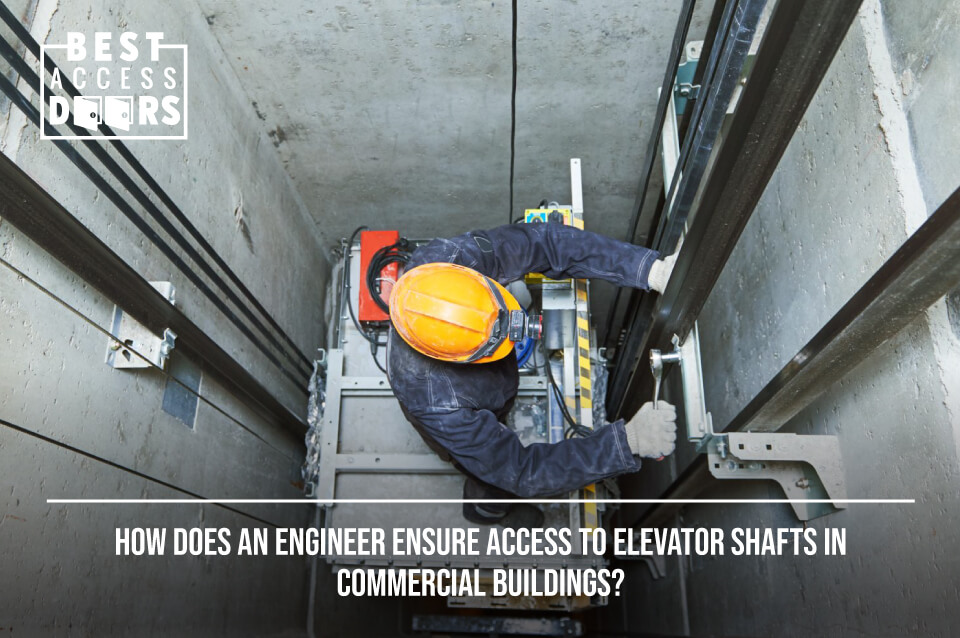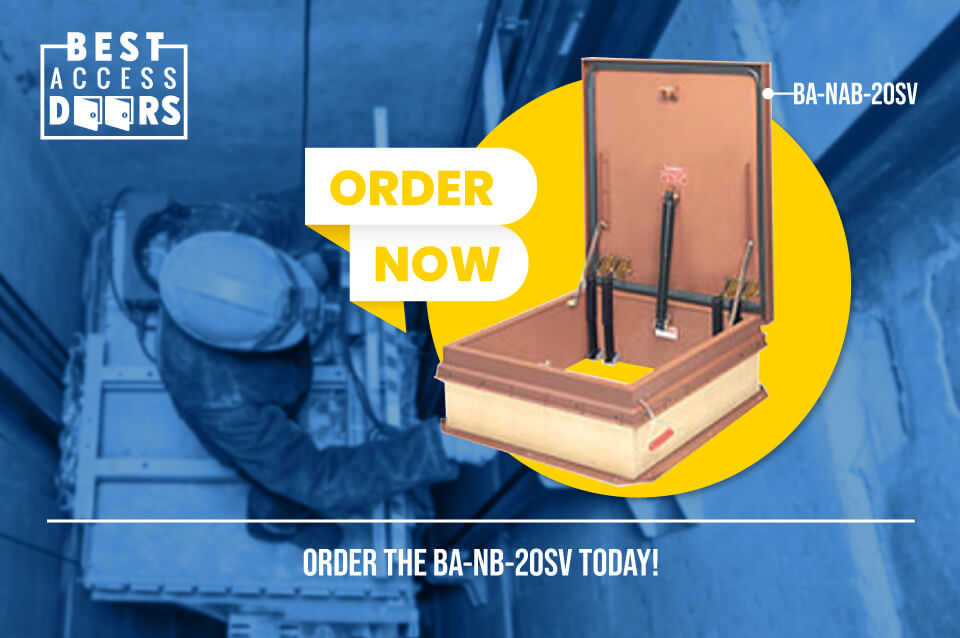How Does An Engineer Ensure Access to Elevator Shafts in Commercial Buildings?
Posted by Best Access Doors on 14th Jun 2023
Elevators provide quick transportation between floors in commercial buildings. As the backbone of your structure, the construction of elevators comes first since they are used during the building phase to transport workers and equipment. Elevator shafts surround the elevator cab and machinery, allowing safe vertical passage throughout the building.
Elevator shafts must follow strict building and fire code requirements for heat sensors and smoke detectors inside elevator hoistways. Fire-rated elevator access doors and automatic smoke vents aid firefighters in bringing a fire under control by removing smoke, heat, and gases from a burning building.
Factors to Consider
Vertical transportation engineers integrate elevator systems into a building's design, considering factors such as the height of the building, the volume of foot traffic, and the needs of those with mobility impairments. Additionally, they work with architects and other professionals to ensure that the elevator system meets the needs of the building's occupants while complying with all applicable building codes and regulations.
Adherence to Building Codes
International Building Code (IBC) is a standard model building code used in the United States and worldwide. The code covers the design, construction, and maintenance of buildings and structures, including fire safety, structural integrity, plumbing, mechanical systems, and energy efficiency. There are also updated requirements for elevators and conveying systems.
Why Elevator Shaft Access is Necessary
The elevator shaft is a vertical passage that runs through the center of the building or along the building's outer walls. An engineer may include special features such as emergency stairwells and access doors to allow maintenance personnel to access the elevator machinery for routine inspections and repairs. The elevator shaft typically houses critical components such as the elevator motor, pulleys, and counterweights, and an elevator access door provides direct access.
Elevator shaft smoke vents provide protection when activated by releasing smoke, heat, and gases from the elevator shaft. They are typically installed on the roof of the building and automatically open when triggered by a fire alarm or smoke detector. Single-leaf elevator shaft smoke vents, like BA-NB-20SV, are excellent for places with small venting areas, like elevator shafts or stairwells.
Dedicated elevator machine rooms are located above or below elevator shafts and contain elevator machinery, control panels, and other equipment. These rooms require suitable access panels that share the same fire rating as the hoistway enclosure served by machinery. Engineers must also apply access doors and hatches on various points along the elevator shaft and machine room for maintenance personnel to perform maintenance.
Choose the Right Elevator Shaft Access for Your Commercial Building
If a fire breaks out in your commercial building, an elevator shaft smoke vent can help slow the spread of flames and dissipate the smoke, allowing firefighters time to control the fire. Elevators present a unique point of vulnerability within your building.
Designed for small spaces and ideal for ventilation in elevators, hoistways, and stairwells, BA-NB-20SV Single-Leaf Automatic Smoke Vent (Bilco) complies with the International Building Code (IBC) for hoistway venting and codes 3004.1 and 3004.2 requirements. Elevator engineers install this model directly over the hoistway enclosure and elevator shaft.
The BA-NB-20SV is a top choice for elevator engineers as they offer enhanced value. Along with providing ventilation for elevator shafts, these unique single-leaf smoke vents have advanced acoustic properties due to high-quality building materials, mineral wool insulation, innovative construction, and a responsive, automatic mechanism, minimizing potential damage.
The smoke vent localizes flames due to its ventilation properties, allowing firefighters to pinpoint and neutralize fires. It sports a frame that is easily placed and fitted into its prepared fitting for a simplified installation process. It comprises a robust 14-gauge steel construction for greater strength and durability against corrosion and the elements.
Superior Fire Rating
The latch release activates using a fusible link, satisfying International Building Code (IBC 910.3.) In an emergency, the fuse will melt at about 165 degrees Fahrenheit (74 degrees Celsius), activating the vent, which limits the lateral spread of fires while protecting against secondary ignitions, contributing to marginal minutes that can potentially save lives. The upward ventilation will minimize the spread of flames to surrounding buildings while creating a point of attack for firefighters when they can access the roof.
BA-NB-20SV maintains the highest UL standard, with a Class A rating, ensuring peace of mind and safe integration in elevator shafts. With rigid 4" wool insulation, tested to satisfy UL790 and UL793 requirements, you can install this vent door with complete peace of mind; whether you require a one or two-hour rating, BA-NB-20SV has you covered.
This unit is weatherproofed with complete insulation and gaskets, reducing the potential internal corrosion to its structural integrity.
Order the BA-NB-20SV today!
Elevator shaft roof vents are easy to install and can be adapted to suit your needs, coming in various shapes and designs, giving them tremendous versatility. Smoke vents are cost-effective, energy-efficient, and simple to maintain. It's no wonder engineers use BA-NB-20SV for elevator shaft access!
Elevator engineers design structures to provide access to elevator shafts for necessary repairs and maintenance. Various types of elevator shaft access are available, including elevator roof hatches, elevator smoke vents, and elevator access doors. For more information on your elevator shaft access options, speak to our product experts at Best Access Doors. Call us – +1 (800) 483-0823.
Share our story - get our 2024 Catalog for FREE!


